Did you know that a pregnant cat can give birth to four to six kittens during their two-month gestation period? That’s right, these furry felines can have quite a large litter! And it doesn’t stop there – a queen, or a female cat, can have up to four litters of kittens in a year. This means that the number of adorable balls of fur that can come from just one cat is astounding.
When it comes to cat litters, the average size typically ranges from 4 to 6 kittens. However, there are various factors that can influence the number of kittens a cat has. The mother’s age, breed, health, and breeding frequency all play a role in determining the size of the litter.
So, if you’ve ever wondered how many kittens your cat can have, or if you’re considering breeding cats, let’s dive deeper into the fascinating world of cat reproduction and discover what factors contribute to the number of kittens a cat can have.
Key Takeaways:
- A pregnant cat can give birth to four to six kittens during their two-month gestation period.
- A queen can have up to four litters of kittens in a year.
- The average cat litter size is 4 to 6 kittens.
- The mother’s age, breed, health, and breeding frequency can influence the number of kittens she has.
What Is a Kitten Season?
In the world of cat reproduction, there is a phenomenon known as the kitten season. During this time, which typically occurs from March to October, cats are most likely to give birth to a large litter of kittens. The kitten season poses unique challenges for animal shelters and contributes to the issue of cat overpopulation.
Unspayed stray cats play a significant role in the spike of kittens that end up in animal shelters during the kitten season. The lack of spaying and neutering programs leads to a higher number of stray cats reproducing and adding to the cat overpopulation problem. These stray cats often seek shelter, food, and safety in animal shelters, compounding the strain on resources.
It is essential to address the issue of cat overpopulation to ensure the well-being of stray cats and alleviate the burden on animal shelters across the country. Spaying and neutering cats not only helps control cat overpopulation but also offers numerous health benefits for the cats themselves.
By spaying or neutering cats, we can prevent them from reproducing and contributing to the growing population of stray cats. Additionally, spaying and neutering can lower the risk of certain diseases and behavioral issues, making cats healthier and happier.
Animal shelters play a critical role in managing the kitten season by providing veterinary care, temporary housing, and adoption services for stray cats and their kittens. By supporting and promoting spaying and neutering programs, as well as adoption initiatives, we can work towards reducing the number of stray cats and ensuring their well-being.
Overall, understanding the concept of the kitten season and taking proactive measures to address cat overpopulation are crucial steps towards creating a better future for stray cats and animal shelters.
How Many Kittens Can a 1-Year-Old Cat Have?
A 1-year-old cat, just like other young cats, can have an average litter size of three to four kittens. However, it is important to consider the well-being and health of the cat when discussing cat pregnancies at such a young age.
Veterinarians highly recommend spaying a young cat to ensure her overall health and prevent her from having too many litters. Early spaying can help reduce the risks associated with cat pregnancies and the strain it may put on her body. It is essential to prioritize the cat’s health and well-being above the desire for kittens.
Spaying a young cat not only prevents unwanted pregnancies but also reduces the risk of certain health issues such as uterine infections and certain types of cancers. It is a responsible decision that promotes the cat’s longevity and quality of life.
Remember, as a pet owner, it is crucial to consult with a veterinarian to determine the best age for spaying or neutering your cat. They will provide expert advice based on the specific needs and health status of your furry friend.
I will now enlist the key points about how many kittens a 1-year-old cat can have:
- A 1-year-old cat can have an average litter size of three to four kittens.
- It is recommended to spay young cats to ensure their health and prevent multiple litters.
- Early spaying helps reduce the risks associated with cat pregnancies.
- Spaying a young cat prevents unwanted pregnancies and reduces the risk of certain health issues.
- Consult with a veterinarian to determine the best time for spaying or neutering your cat.
By making responsible decisions regarding cat pregnancies and spaying, you can ensure the best possible health and well-being for your furry friend.
How Many Litters Can Cats Have Per Year?
Cats have the remarkable ability to reproduce multiple times in a year. Understanding the frequency at which a cat can have litters is essential for cat breeders and owners interested in cat breeding. Factors such as cat fertility, the cat’s gestation cycle, and overall reproductive health play a crucial role in determining the number of litters a cat can have annually.
On average, a cat can have up to four litters in a year. The gestation period for cats is approximately two months, so this allows for multiple breeding cycles within a year. However, it is important to consider the well-being and reproductive health of the mother cat when determining the number of litters she can safely have.
Veterinarians often recommend limiting a cat to no more than two litters per year. This restriction allows for adequate recovery time between pregnancies, minimizing the risk of health complications for the mother cat and promoting the overall welfare of the kittens she produces.
The cat’s age, health, and breed also influence their fertility and ability to have multiple litters in a year. Older cats may have reduced fertility, while certain breeds may be more prone to reproductive health issues. Regular veterinary check-ups and consultations are crucial in assessing a cat’s reproductive health and determining the optimal breeding frequency.
Factors Affecting the Number of Litters:
- Cat fertility: A cat’s reproductive capabilities can vary based on individual factors such as hormones, genetics, and overall health.
- Gestation cycle: Cats have a relatively short gestation period of about two months, allowing for more breeding cycles within a year compared to other animals.
- Cat reproductive health: The overall reproductive health, including any underlying health conditions or complications, can influence the number of litters a cat can have.
It is essential to prioritize the well-being of both the mother cat and her kittens when planning cat breeding. It is advisable to work closely with a veterinarian to ensure responsible breeding practices and maintain the overall health and welfare of the cat population.
| Factors | Influences on Number of Litters |
|---|---|
| Cat Age | Older cats may have reduced fertility. |
| Cat Health | Underlying health issues can impact a cat’s reproductive capabilities. |
| Cat Breed | Some breeds may be more prone to reproductive health issues. |
In conclusion, cats are capable of having multiple litters in a year, with an average of up to four litters. However, it is important to consider the cat’s reproductive health and overall well-being when determining the breeding frequency. Responsible cat breeding practices prioritize the health and welfare of the cats involved, ensuring a sustainable and thriving cat population.
What Determines How Many Kittens a Cat Has?
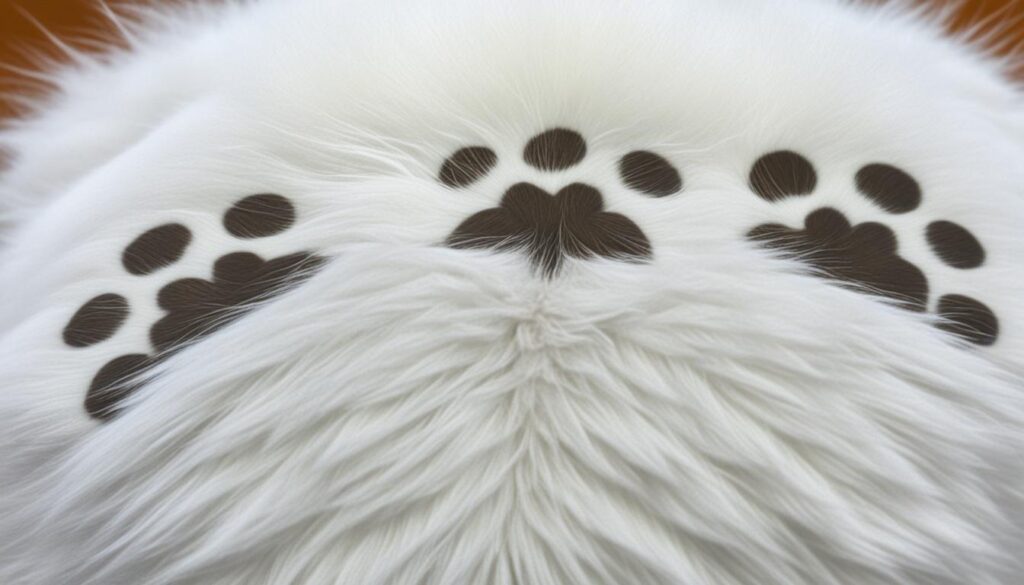
The number of kittens a cat has can be influenced by several factors, including the mother’s age, health, breed, health problems, and breeding frequency. Let’s explore each of these factors in more detail:
Mother’s Age
The age of the mother cat can play a role in determining the number of kittens she has. First-time queens, or young cats having their first litter, may typically have up to three kittens. As the cat matures and has subsequent litters, the number of kittens in each litter may increase.
Mother’s Health
The health of the mother cat is crucial in determining the number of kittens she can have. Cats that are in good overall health are more likely to have larger litters. On the other hand, cats with underlying health problems or genetic disorders may produce smaller or fewer kittens.
Cat Breed
Different cat breeds have varying tendencies when it comes to litter sizes. Some cat breeds are known for producing larger litters, while others may typically have smaller litters. It’s essential to research the specific breed of your cat if you’re curious about how many kittens she may have.
Health Problems
Certain health problems can affect a cat’s fertility and consequently impact the number of kittens she can have. For example, feline infectious peritonitis (FIP) is a viral disease that can impact a cat’s reproductive health. It’s crucial to provide proper medical care and regular veterinary check-ups to ensure your cat’s overall health and fertility.
Breeding Frequency
The frequency of breeding plays a significant role in how many kittens a cat can have. Queens, or female cats, need to mate to ovulate and have litters. If regularly bred during their fertile periods, they are more likely to conceive and produce larger litters. However, it’s essential to consider the cat’s well-being and allow sufficient recovery time between litters to prevent any negative effects on her health.
Understanding these factors can give you insights into how many kittens a cat may have. However, it is essential to remember that each individual cat is unique, and the number of kittens can still vary. It’s always best to consult with a veterinarian for personalized advice and guidance regarding your specific cat’s reproductive capacity.
How Can You Tell How Many Kittens Your Cat Is Having?
Determining the exact number of kittens a cat will have can be challenging. However, with the assistance of a veterinarian, there are methods to estimate the kitten count before birth. Two common approaches used are abdominal palpation and X-rays.
Abdominal Palpation
During the final trimester of pregnancy, a veterinarian can perform abdominal palpation on the pregnant cat. This involves carefully feeling the cat’s abdomen to assess the size and position of the kittens. By detecting individual fetal structures, a rough estimate of the number of kittens can be made.
X-ray Imaging
In some cases, an X-ray may be recommended to obtain a more accurate count of the kittens. This procedure is usually performed late in the pregnancy, as the kittens’ skeletons become visible on the X-ray image. The veterinarian can count the number of skeletons and determine the approximate litter size.
It is important to note that these estimation methods are not always 100% accurate. The number of kittens can vary, and sometimes unexpected surprises may occur during delivery. However, they provide valuable insight to help you prepare for the arrival of the kittens.
As an interesting fact, the largest recorded litter of kittens consisted of 19 kittens. However, four of them were stillborn, resulting in a total of 15 surviving kittens.
Conclusion
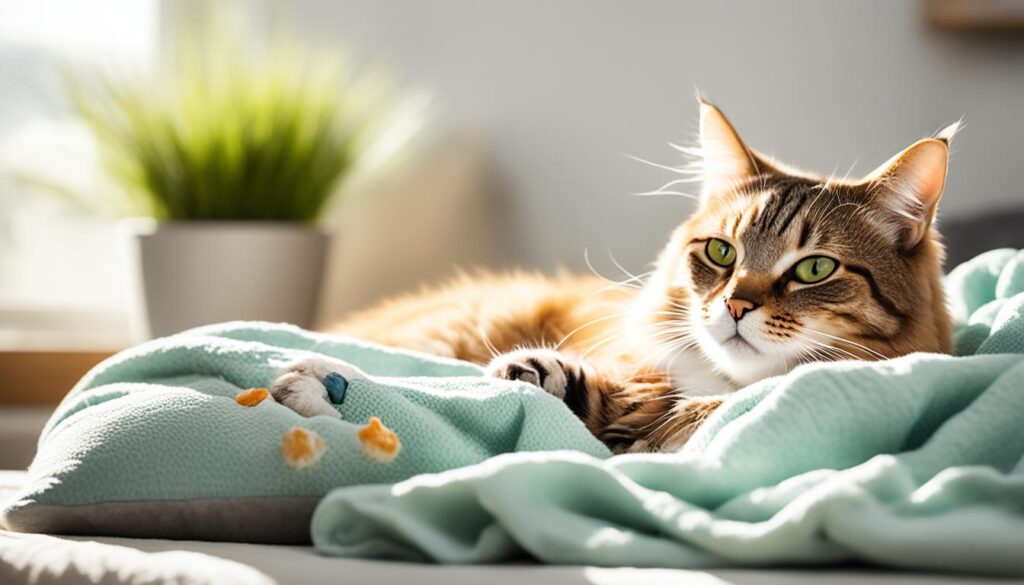
Based on various factors such as the mother’s age, health, breed, and breeding frequency, the number of kittens a cat can have can vary. On average, a cat gives birth to a litter size of 4 to 6 kittens. Taking proper care of a pregnant cat is crucial for ensuring the well-being of both the mother and her kittens. This includes providing adequate nutrition, scheduling regular veterinary check-ups, and creating a suitable birthing space.
Spaying and neutering cats play a vital role in controlling cat overpopulation and preventing health issues associated with multiple litters. By spaying or neutering cats, we can not only help manage the population but also contribute to the overall welfare of these feline companions.
Remember, responsible cat ownership involves understanding the factors that influence the number of kittens a cat can have and taking proactive steps to provide them with the care they need throughout their reproductive lifecycle.
| Factors | Average Cat Litter Size |
|---|---|
| Mother’s age | Varies |
| Mother’s health | Varies |
| Cat breed | Varies |
| Breeding frequency | Varies |
Tips for Caring for a Pregnant Cat:
- Provide a balanced and nutritious diet tailored for pregnant cats.
- Ensure regular veterinary check-ups throughout the pregnancy.
- Create a comfortable and safe birthing space for the cat.
- Monitor the cat’s behavior and physical changes as the due date approaches.
- Be prepared for any signs of labor and seek veterinary assistance if necessary.
Tips for Caring for a Litter of Kittens
When it comes to caring for a litter of kittens, providing them with the right environment and attention is essential for their well-being. Here are some tips to help you ensure the optimal care for your precious little ones:
1. Create a Clean and Warm Space
Set up a designated area for the kittens that is clean, warm, and safe. A box or enclosed space with soft bedding will provide them with a cozy and secure environment.
2. Monitor Health and Nutrition
Regularly check the health of both the mother cat and the kittens. Watch for any signs of illness or distress, such as loss of appetite, lethargy, or unusual behaviors. Proper kitten nutrition is crucial, so feed them a well-balanced diet that is appropriate for their age, preferably a high-quality kitten food.
3. Vaccinations
Make sure to follow the recommended vaccination schedule to protect the kittens from common diseases. Consult with your veterinarian to determine the appropriate time and type of vaccinations needed.
4. Prepare a Proper Birthing Space
Before the mother cat gives birth, ensure she has a suitable birthing space. Provide a quiet and secluded area where she can comfortably deliver her kittens. This space should be easily accessible for cleaning and monitoring.
5. Recognize Signs of Labor
Be familiar with the signs of labor in cats, such as restlessness, nesting behavior, and increased vocalization. This knowledge will help you anticipate the arrival of the kittens and provide appropriate support during the birthing process.
6. Veterinary Assistance
In case of any complications during pregnancy or labor, seek immediate veterinary assistance. A veterinarian can provide the necessary expertise and medical intervention to ensure the health and safety of the mother cat and her kittens.
By following these tips, you can ensure the best care for a litter of kittens. Remember to prioritize their well-being and seek professional help whenever necessary.
Managing Stray & Feral Cat Populations
Stray and feral cats pose a significant challenge to communities, but there are effective strategies for managing their populations. One crucial approach is through spaying and neutering programs. By sterilizing cats, we can prevent them from reproducing, which helps control the number of homeless cats on the streets. Spaying and neutering not only reduces the chances of unwanted litters but also provides health benefits for the cats themselves.
Pet adoption is another important aspect of managing stray and feral cat populations. By providing a loving home for cats in need, individuals play a vital role in reducing the number of cats living on the streets. Adopting a cat not only gives them a safe and comfortable environment but also contributes to the overall well-being of these animals. Adoption offers a second chance for cats to experience love and care.
Furthermore, proper care for stray cats is crucial in managing their populations. Implementing community programs to provide food, water, and shelter can help support stray cats and improve their quality of life. Additionally, raising awareness about the importance of responsible cat ownership and encouraging people to report stray cats to local animal welfare organizations can make a significant difference in addressing the issue.
FAQ
How many kittens can a cat have?
What is a kitten season?
How many kittens can a 1-year-old cat have?
How many litters can cats have per year?
What determines how many kittens a cat has?
How can you tell how many kittens your cat is having?
What should I know about caring for a litter of kittens?
How can stray and feral cat populations be managed?
References
|
International Cat Association (TICA) |
|
|
The Cat Fanciers’ Association (CFA) |
|
|
World Cat Federation (WCF) |
|
|
Fédération Internationale Féline (FIFe) |

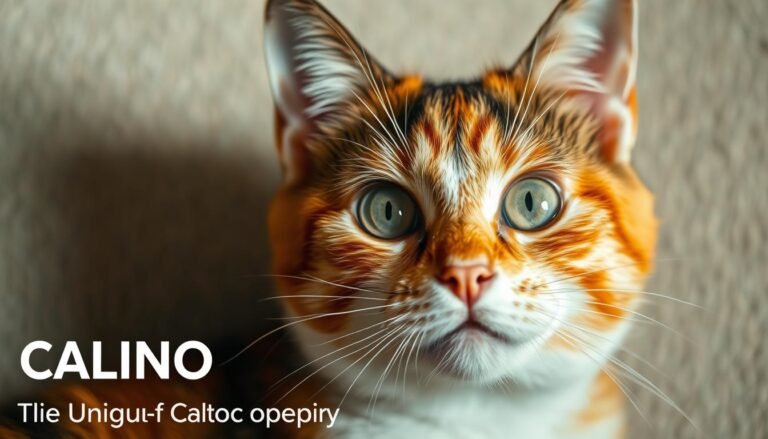
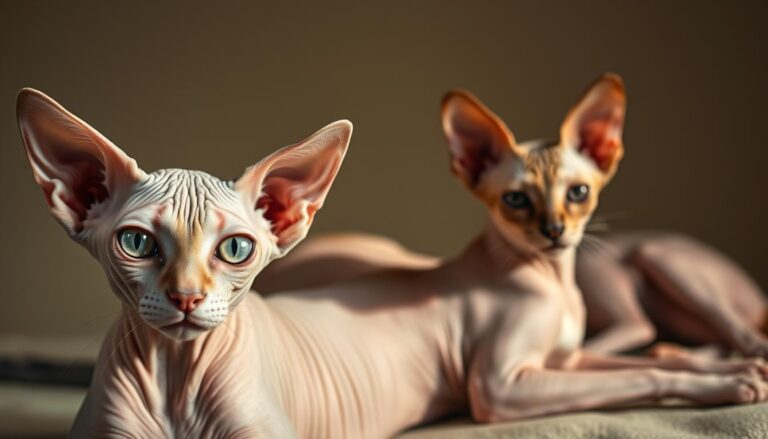
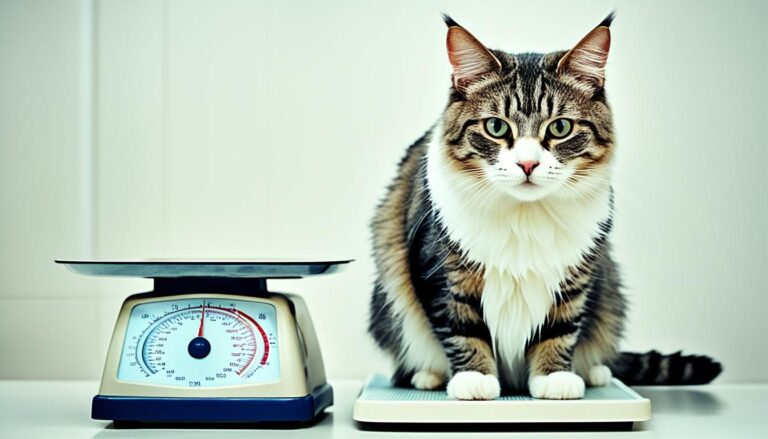




[…] with their intelligence, make them engaging and interactive pets. Consider adopting a Sphynx cat and discover the unique charm of this extraordinary […]
[…] Cats’ instinct to knead originates from their days as kittens. Kneading stimulates the flow of milk from their mother’s teats, promoting their nourishment. As adult cats, they may continue this behavior as a sign of comfort and reassurance. […]